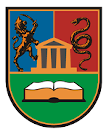Please use this identifier to cite or link to this item:
https://scidar.kg.ac.rs/handle/123456789/22500Full metadata record
| DC Field | Value | Language |
|---|---|---|
| dc.contributor.author | Sun, Yawei | - |
| dc.contributor.author | Tao, Hongfeng | - |
| dc.contributor.author | Stojanović, Vladimir | - |
| dc.date.accessioned | 2025-08-27T07:54:26Z | - |
| dc.date.available | 2025-08-27T07:54:26Z | - |
| dc.date.issued | 2025 | - |
| dc.identifier.issn | 1474-0346 | en_US |
| dc.identifier.uri | https://scidar.kg.ac.rs/handle/123456789/22500 | - |
| dc.description.abstract | The field of intelligent fault diagnosis has witnessed significant advancements within industrial applications. The majority of existing methods are oriented toward closed-set scenarios, operating under the assumption of a shared labelling space for training and test data. This assumption results in the set of fault patterns remaining constant across different scenarios. However, in real industrial scenarios, new faults often appear in the test set, which may lead to the fact that latent unknown faults will be wrongly and randomly classified as known faults. To address the aforementioned challenges, an open-set classification method via latent representation prompt and time–frequency fusion is proposed in this paper. The aim of this method is to solve the problem of unknown fault recognition in open-set fault diagnosis. Firstly, time–frequency fusion is employed to construct complementary time–frequency joint representations, with the objective of comprehensively capturing the time-varying features and frequency domain information of the signal. Secondly, latent representation prompt and prototype augmentation assist the model in bringing the latent representations closer to the known class samples, thereby reducing the similarity between the latent representations and the unknown class samples. Subsequently, an new open score calculation method is proposed, and the theoretical derivation as well as the proof of the method is provided. Consequently, the unknown class samples are to be rejected as much as possible, with the aim of ensuring the classification performance of the known class samples. The efficacy, superiority and extensive applicability of the proposed method are illustrated by experimental results on four datasets. | en_US |
| dc.language.iso | en | en_US |
| dc.relation | 451-03-137/2025-03/200108 | en_US |
| dc.relation.ispartof | Advanced Engineering Informatics | en_US |
| dc.subject | Intelligent fault diagnosis | en_US |
| dc.subject | Open-set classification | en_US |
| dc.subject | Time–frequency fusion | en_US |
| dc.subject | Latent representation prompt | en_US |
| dc.subject | Unknown fault recognition | en_US |
| dc.title | Open-set classification method via latent representation prompt and time–frequency fusion toward unknown fault recognition | en_US |
| dc.type | article | en_US |
| dc.description.version | Published | en_US |
| dc.identifier.doi | 10.1016/j.aei.2025.103779 | en_US |
| dc.type.version | PublishedVersion | en_US |
| Appears in Collections: | Faculty of Mechanical and Civil Engineering, Kraljevo | |
Files in This Item:
| File | Description | Size | Format | |
|---|---|---|---|---|
| ADVEI_2_2025.pdf Restricted Access | 1.01 MB | Adobe PDF | View/Open |
Items in SCIDAR are protected by copyright, with all rights reserved, unless otherwise indicated.

